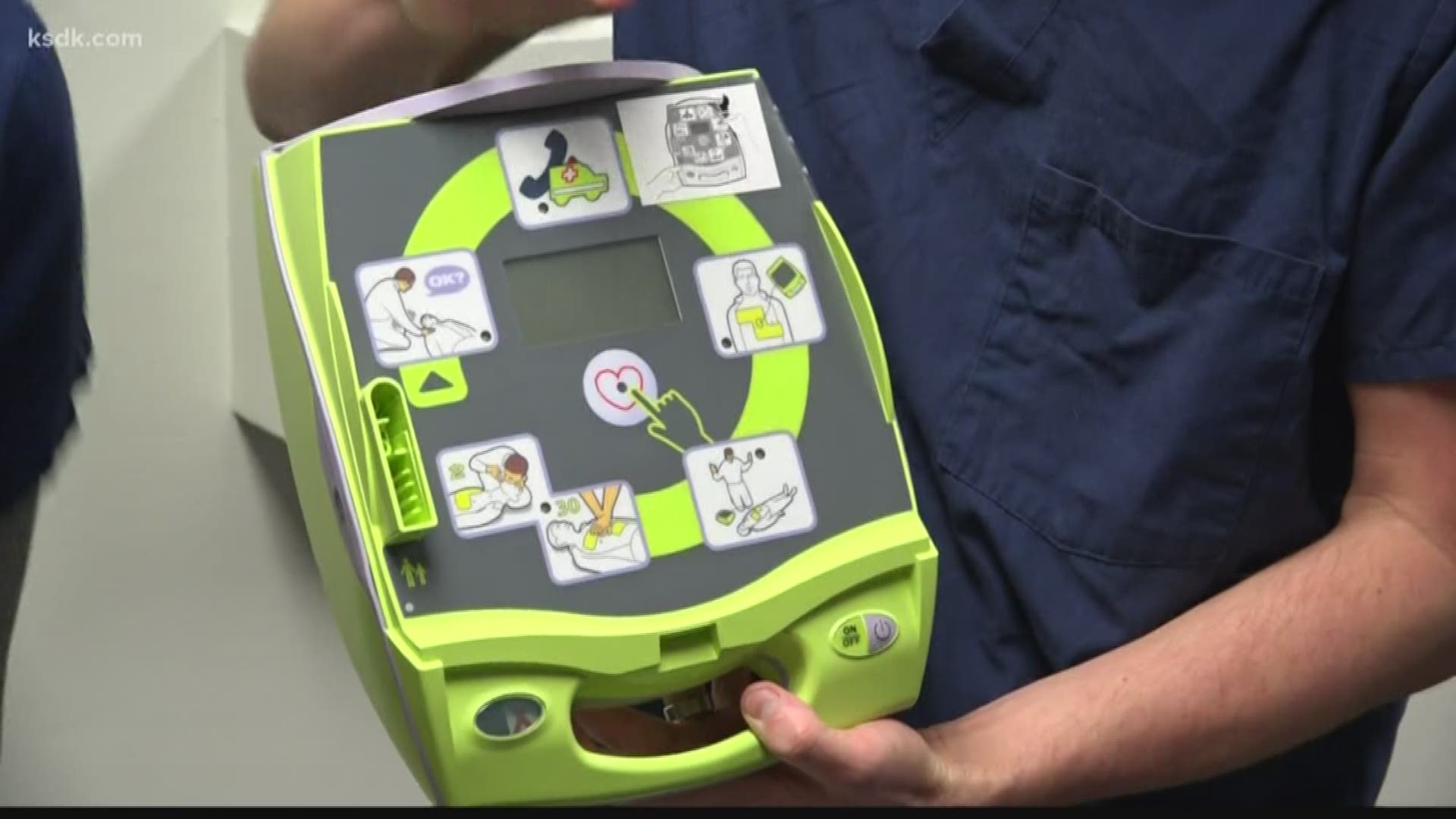ST. LOUIS — After Blues player Jay Bouwmeester suffered what the team called a "cardiac event" during Tuesday's game, 5 On Your Side asked the Rapid Response Team at Saint Louis University Hospital to explain how Automatic External Defibrillators (AEDs) work.
If someone is unresponsive, the first and most important step is to designate someone specific to call 911, the team said. In a crisis, it's common for people to assume someone else is calling for help and no one actually does.
Then, start chest compressions at a rate of 100 per minute.
From there, Saint Louis University Hospital nurses Jessica Zerr and Michael Arb demonstrated how an AED works for 5 On Your Side cameras.
The machine comes with simple, illustrated instructions that walk you through each step.
"We're going to turn on the machine... take out the pads," Arb demonstrated.
The pads that deliver the shock to the patient usually come in a pouch that needs to be opened and the pads need to be plugged into the AED.
At that point, Arb said briefly pause the CPR, peel off the sticky tabs on the pads, and put them on the person like the pictures show.
The pads have to be on the person's skin -- through the clothes won't work.
From there, the machine will tell you if the person needs to be shocked. And the professionals say it won't shock a person who doesn't need it.
When the machine prompts it, tell everyone to stand clear and press the button near the center that will likely be flashing red to deliver the shock.
It's important, Zerr said, that the patient isn't lying in any water and their skin is wiped dry if they are wet.
After the shock, immediately restart chest compressions and wait for the machine to determine if another shock is required.
Just a couple minutes of that could save someone's life. And Arb would know.
"It saved my cousin's life," he said.
In his mid-30s, while playing soccer, his cousin Bret Arb collapsed a few years ago. And it was an AED that saved his life -- even with a doctor playing on the other team.
"He used the same machine," Michael Arb said of the doctor who helped his cousin. "(The AED) still walks you through and tell you if it's a shock-able rhythm or not."
Arb warned that everyone should be prepared for an event like this.
"It could happen to about anyone and you never know when you need to be ready to intervene and do something," he said.
More local stories:


